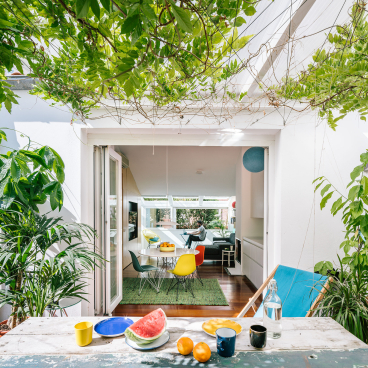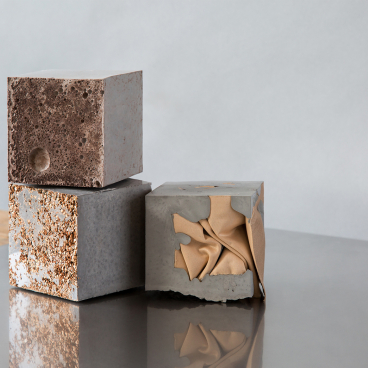David Adjaye's Making Memory explores the role of today's monuments and memorials
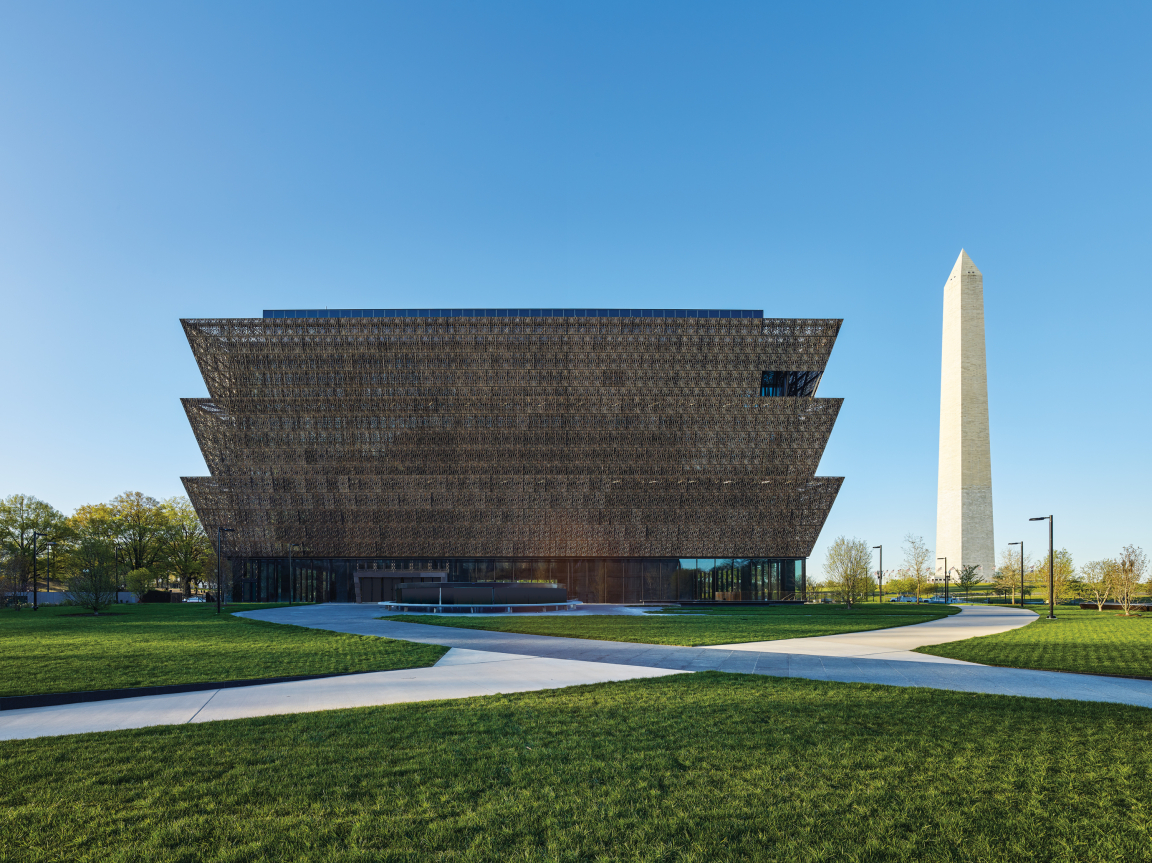
Smithsonian National Museum of African American History and Culture, credit: Brad Feinknopf
This February, the Design Museum will present a new exhibition that explores the role of monuments and memorials in the 21st century, through seven projects by celebrated British-Ghanaian architect, Sir David Adjaye OBE.
He will examine the idea of the monument and present his thinking on how architecture and form are used as storytelling devices. Monuments are a record of who we are and are deeply ingrained in our psyche as a way of memorialising our triumphs and failures. However, the form that monuments take, and the way they are experienced, is constantly changing.
This exhibition shows that contemporary monuments are no longer static objects in a field – plaques, statues or neo-classical sculptures – but are dynamic and complex spaces that serve a wider purpose.
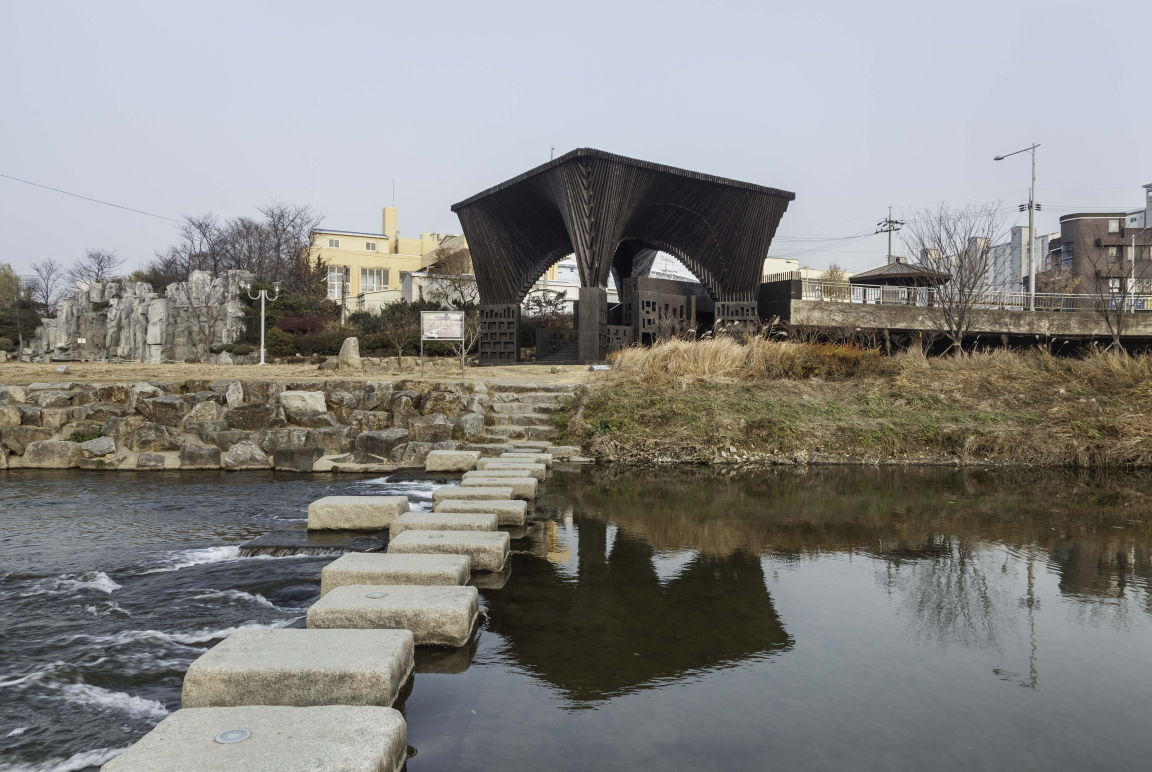
Gwangju River Reading Room, credit: Kyungsub Shin
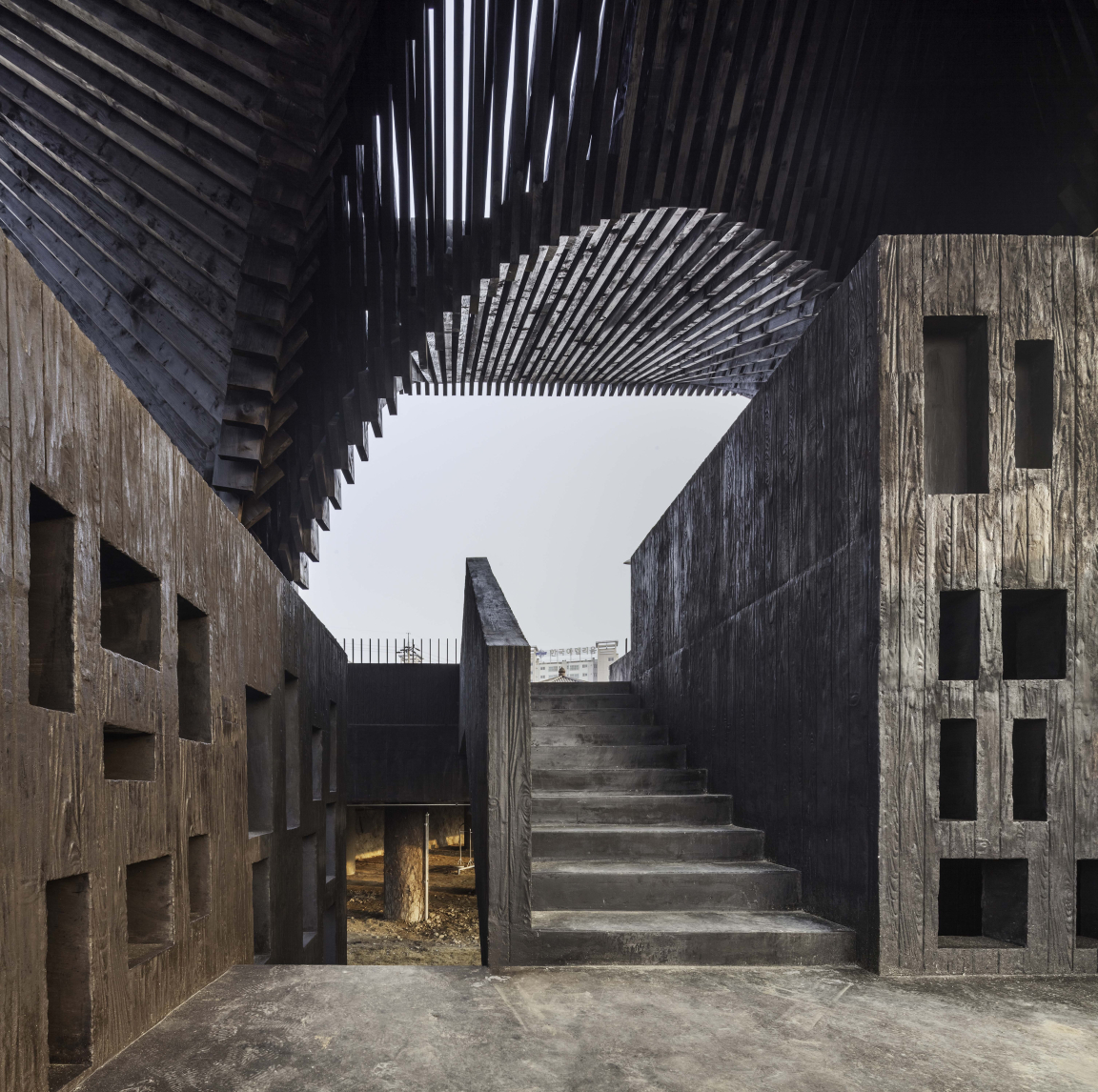
Gwangju River Reading Room, credit: Kyungsub Shin
"Making Memory is set up as a provocation or a question to the public," Sir David told Material Source. "I am not scared of a narrative that unfolds and splinters. I find that is much more representational of the collective consciousness that we all live in today. I really hope the exhibition is a vehicle for dialogue and discussion about what constitutes a monument and a memorial at the beginning of the 21st century.
"The monument is no longer a representation, it is an experience of time and place that is available to everyone. Whether it’s for a nation, a race, a community, or a person, it is really used as a device to talk about the many things facing people across the planet. Democratisation does not mean that monuments cease to be relevant; it requires the monument to be transformed so that it has an inbuilt openness and can be approached and understood from many points of view."
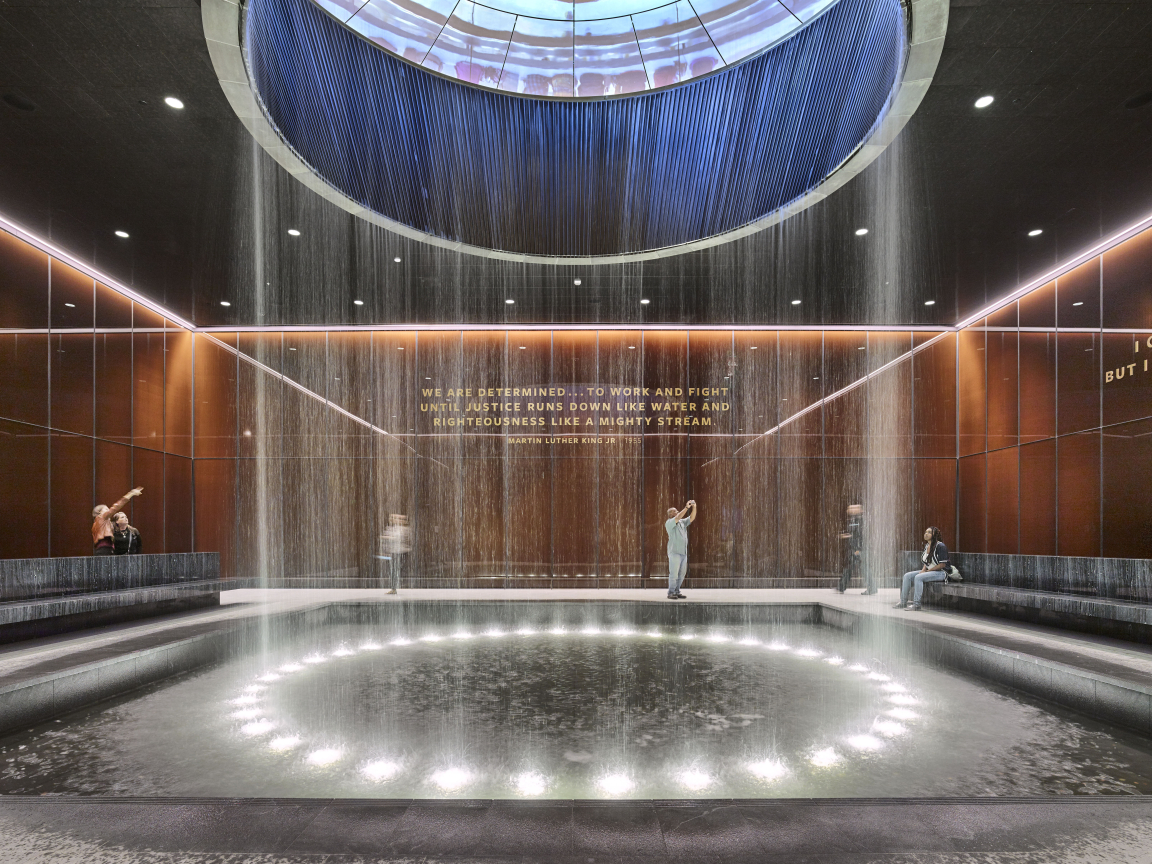
Smithsonian National Museum of African American History and Culture, credit: Alan Karchmer
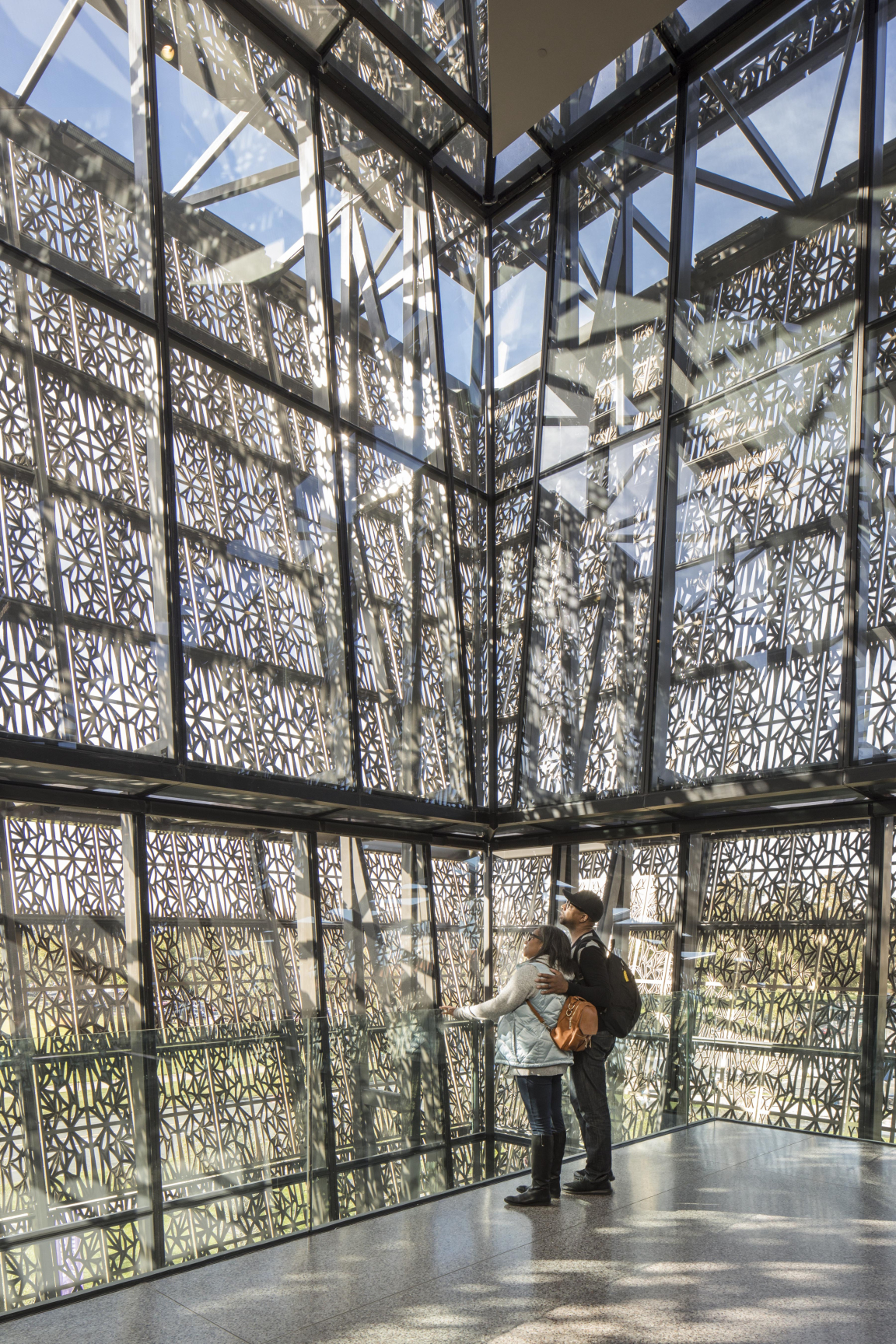
Smithsonian National Museum of African American History and Culture, credit: Brad Feinknopf
The exhibition opens with a visual survey of monuments and memorials starting with the Acropolis of Athens (447 BC) and continues through many places, cultures and ideas until the 2018 Millicent Fawcett statue by Gillian Wearing in London, UK.
Each of the seven projects, selected by Sir David Adjaye, is presented in a dedicated room alongside specially commissioned video interviews and immersive site-specific displays. For example, the Youruba sculpture that inspired the form of the Smithsonian National Museum of African American History and Culture is displayed at the centre of the room to demonstrate how Adjaye’s design process uses aspects of anthropology, history and sociology to investigate form and purpose.
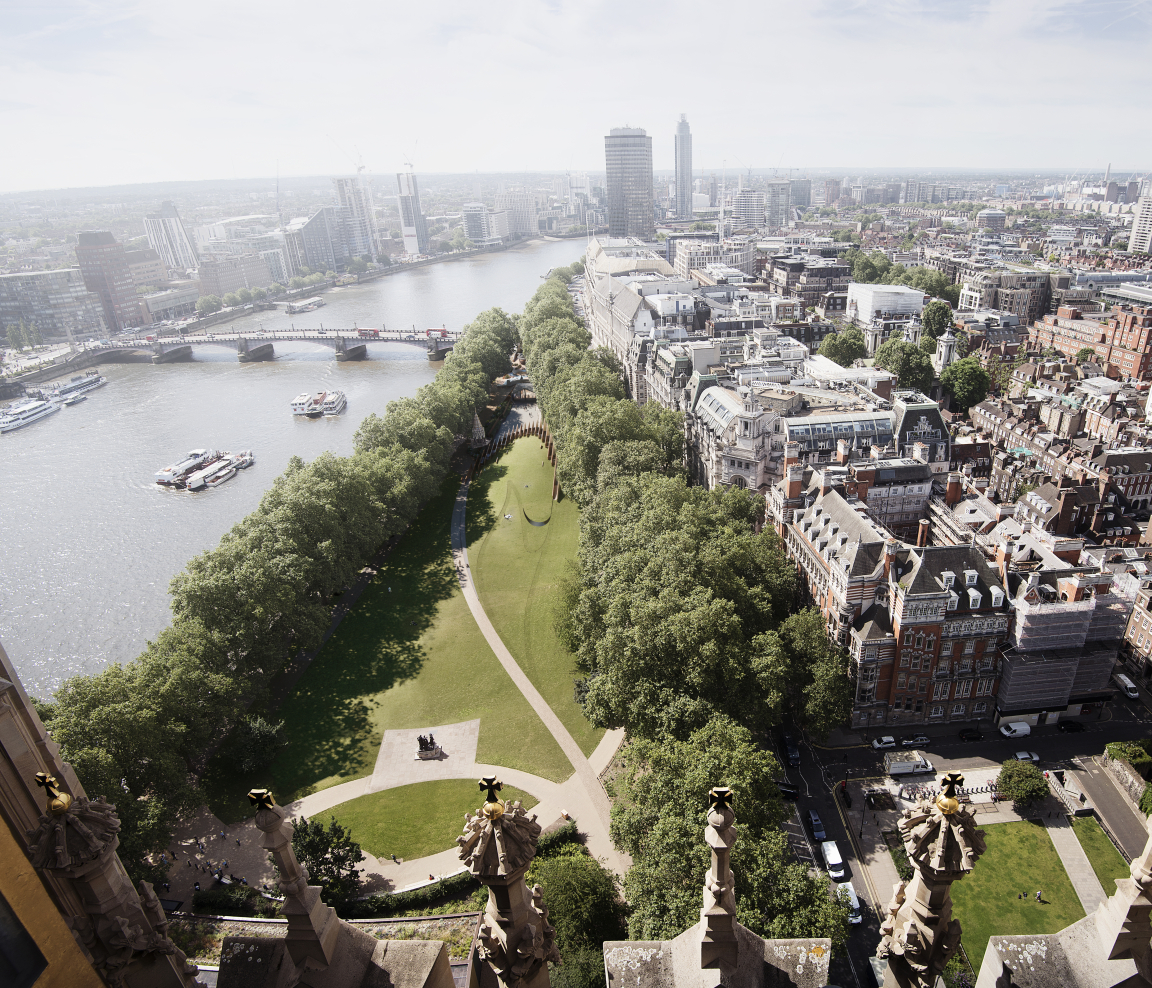
UK National Holocaust Memorial and Learning Centre, credit: Adjaye Associates & Ron Arad Architects
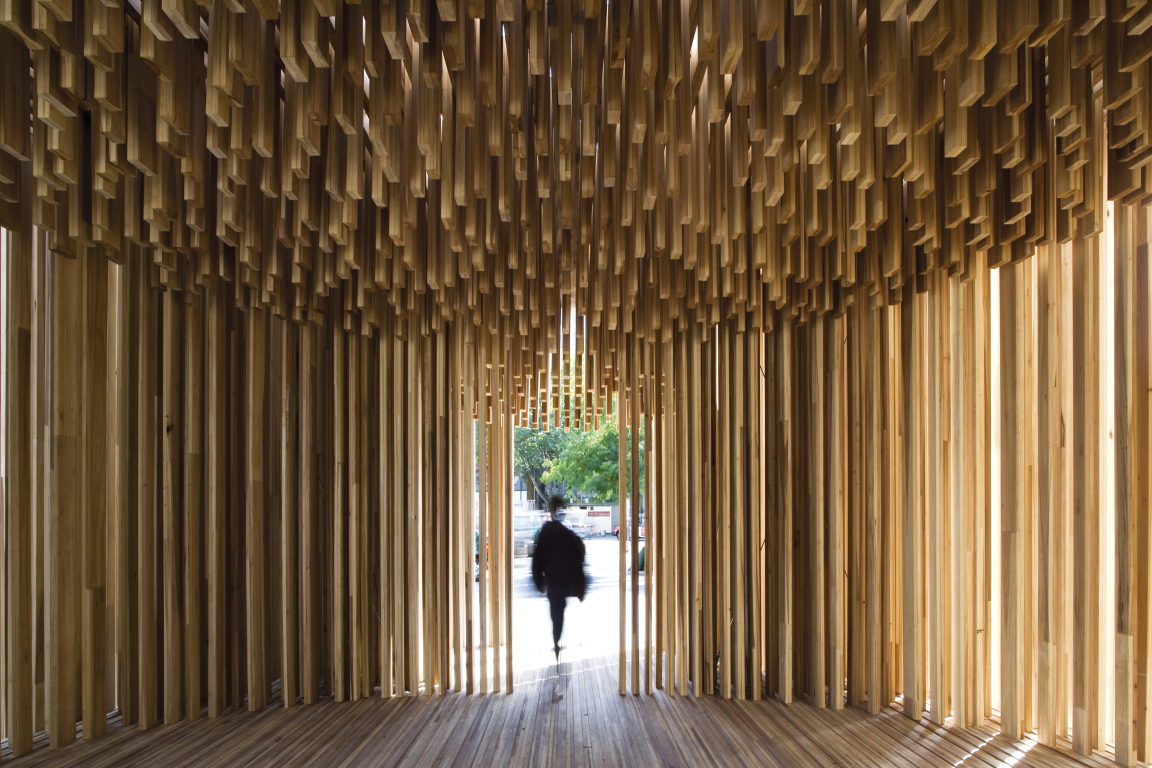
Sclera pavilion, credit: Leonardo Finotti
The room dedicated to the National Cathedral of Ghana, meanwhile, will be populated with traditional Asante umbrellas. The form of the Cathedral’s ‘canopy like’ roof is influenced by these Ghanaian umbrellas, the Baoman ceremonial canopy, and traditional tabernacle shelters – combining motifs from Christianity with Kingship and Western African tribal traditions.
Three further ongoing projects feature in the exhibition. This is the first opportunity to see an in-depth display of the proposed Coretta Scott King and Martin Luther King Jr. Memorial in Boston, designed to be a place for discursive action and assembly.
Another room includes a dedicated space for the proposed UK Holocaust Memorial and Learning Centre designed in collaboration with Ron Arad Architects as Memorial Architect and Gustafson Porter + Bowman as Landscape Architect. Visitors will also have a chance to explore MEMO - the Mass Extinction Memorial Observatory designed with Sebastian Brooke and proposed for a coastal site in Dorset.




